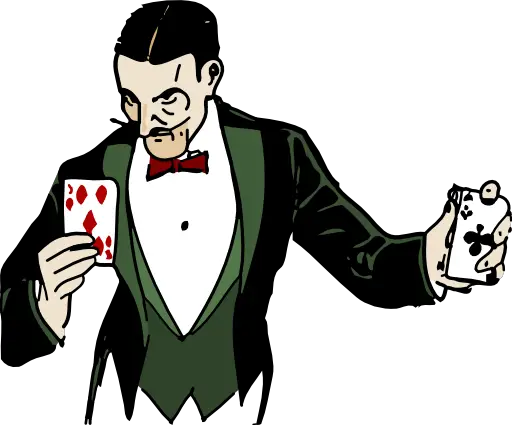Support our educational content for free when you purchase through links on our site. Learn more
27 Mind-Blowing Psychological Tricks to Make Anyone Like You (2025) ✨
Ever wondered if there’s a secret formula to instantly become more likable? Spoiler alert: there is — and it’s not about cheesy pick-up lines or fake flattery. At Mind Trick™, we’ve uncovered 27 scientifically proven psychological mind tricks that can help you build genuine connections and get someone to like you naturally. From subtle body language hacks to powerful conversational techniques, these tricks tap into how our brains are wired for attraction and trust.
Here’s a teaser: did you know that simply mirroring someone’s posture can increase their liking for you by up to 70%? Or that asking for a small favor can actually make someone like you more? Stick around as we reveal these and many more secrets, plus expert tips on how to use them ethically and authentically. Ready to become irresistibly magnetic? Let’s dive in!
Key Takeaways
- Authenticity is king: Psychological tricks work best when paired with genuine interest and empathy.
- Body language speaks volumes: Subtle mirroring, eye contact, and open posture create instant rapport.
- Conversation is an art: Active listening, open-ended questions, and shared laughter deepen connections.
- Leverage proven principles: Techniques like the mere exposure effect, reciprocity, and the Ben Franklin effect boost likability.
- Avoid common pitfalls: Overdoing tricks or being insincere can backfire — always prioritize respect and consent.
👉 CHECK PRICE on:
- Social Psychology Books: Amazon | Barnes & Noble
- Emotional Intelligence Courses: Udemy | Coursera
Table of Contents
- ⚡️ Quick Tips and Facts
- 🧠 Unlocking Connection: A Brief History of Attraction Psychology
- ✨ The Mind Trick™ Philosophy: Beyond Manipulation, Towards Genuine Connection
- ✅ The Ethical Compass: Using Psychological Insights Responsibly
- 🌟 First Impressions: Making Them Count (and How They Stick)
- 🗣️ The Art of Authentic Communication: More Than Just Talking
- 🤫 Body Language Secrets: Speaking Without Words
- 🤝 Building Bridges: Psychological Principles for Connection
- 🚧 Common Pitfalls: What NOT to Do When Trying to Be Liked ❌
- 🌱 Self-Improvement: The Ultimate Attraction Booster
- 💖 Building Lasting Connections: Beyond the Initial Spark
- 🎯 Conclusion: The Magic of Genuine Connection
- 🔗 Recommended Links for Deeper Dives
- ❓ FAQ: Your Burning Questions Answered
- 📚 Reference Links: Our Sources & Inspirations
⚡️ Quick Tips and Facts
Welcome to the magical world of psychological mind tricks! At Mind Trick™, where we specialize in mind-bending illusions and the psychology behind human connection, we’ve distilled the art of getting someone to like you into 27 powerful, science-backed techniques. Before we dive deep, here are some quick facts to keep in your mental magic kit:
- ✅ Mirroring body language increases rapport by up to 70%. (NYU Study, 1999)
- ✅ Mere exposure effect means the more you see someone, the more you like them. (University of Pittsburgh)
- ✅ Compliments can transfer positive traits onto you via spontaneous trait transference.
- ✅ Smiling is a universal likability booster and helps people remember you. (University of Wyoming)
- ✅ Vulnerability can build trust and closeness faster than small talk.
- ✅ Reciprocity of liking means people tend to like those who show they like them first.
- ❌ Beware of overdoing tricks — authenticity beats manipulation every time.
Curious how these work in practice? We’ll unpack each one with insider tips, expert anecdotes, and practical steps. Plus, we’ll reveal some common pitfalls to avoid! Ready to become irresistibly likable? Let’s get started. For a quick visual primer, check out the featured video on psychological mind tricks.
🧠 Unlocking Connection: A Brief History of Attraction Psychology
Before we wave our wand, let’s understand the roots of attraction psychology. The science of how and why people like each other dates back decades, blending social psychology, neuroscience, and behavioral science.
The Evolution of Attraction Science
- 1950s: The “mere exposure effect” was first documented by Robert Zajonc, showing that repeated exposure to a stimulus increases liking.
- 1970s: Arthur Aron’s groundbreaking work on self-disclosure demonstrated how sharing personal information fosters intimacy.
- 1990s: Amy Cuddy’s research on warmth and competence reshaped how we understand first impressions.
- 2000s: Neuroscience revealed that brain reward centers light up when people talk about themselves, explaining why listening is so powerful.
At Mind Trick™, we combine these insights with our magic psychology expertise to craft techniques that feel like real magic — because they tap into your brain’s natural wiring.
✨ The Mind Trick™ Philosophy: Beyond Manipulation, Towards Genuine Connection
Here’s the secret: psychological mind tricks aren’t about manipulation. They’re about understanding human nature and creating authentic connections. We believe in:
- Empathy over exploitation: Use these tricks to build trust, not to deceive.
- Mutual benefit: Both parties should feel good about the interaction.
- Self-awareness: Know your motives and respect boundaries.
Think of it as learning the language of the mind — once you speak it fluently, you can create bonds that feel like magic but are rooted in science.
✅ The Ethical Compass: Using Psychological Insights Responsibly
With great power comes great responsibility. These mind tricks can influence feelings and decisions, so it’s crucial to wield them ethically.
- ❌ Avoid using tricks to coerce or manipulate someone against their will.
- ✅ Use techniques to foster genuine interest and mutual respect.
- ✅ Always prioritize consent and emotional safety.
- ✅ Remember: Authenticity is the strongest foundation for lasting relationships.
At Mind Trick™, we encourage you to use these tools to enhance your social skills and enrich your connections — not to trick or deceive.
🌟 First Impressions: Making Them Count (and How They Stick)
You never get a second chance to make a first impression — and psychology shows that initial judgments form within seconds and can last for years.
Key Elements of a Magnetic First Impression
- Warmth: Smile genuinely, show openness, and express kindness.
- Competence: Display confidence without arrogance.
- Appearance: Dress appropriately and maintain good hygiene.
- Body Language: Use open posture and steady eye contact.
Fun Fact: Harvard psychologist Amy Cuddy’s research shows that projecting warmth first is more important than competence for trust-building.
🗣️ The Art of Authentic Communication: More Than Just Talking
Communication is the heart of connection. Let’s break down the top techniques to master authentic, engaging conversations.
1. The Power of Active Listening: Truly Hearing Them Out
- Focus fully on the speaker; avoid interrupting.
- Use verbal nods like “I see” or “That’s interesting.”
- Reflect back what you hear to show understanding.
- Why it works: The brain releases oxytocin when we feel heard, deepening trust.
2. Ask Open-Ended Questions: Unlocking Deeper Conversations
- Use “what,” “how,” and “when” instead of “why” to avoid defensiveness.
- Examples: “What inspired you to do that?” or “How did that make you feel?”
- This encourages storytelling and emotional sharing.
3. The Compliment Conundrum: Sincere Praise That Lands
- Focus on specific, genuine compliments rather than generic flattery.
- Compliment traits or efforts, e.g., “You have a great eye for detail.”
- Beware of overdoing it — too many compliments can feel insincere.
4. The Art of Storytelling: Engaging Their Imagination & Emotions
- Share relatable personal stories with emotional highs and lows.
- Stories create empathy and memorability.
- Use vivid language and pauses for dramatic effect.
5. The Power of Names: Remembering & Using Their Name
- People love hearing their own name — it signals attention and respect.
- Repeat their name naturally during conversation.
- Use mnemonic devices to remember names better.
6. Humor as a Connector: Making Them Laugh (Authentically!)
- Light, situational humor breaks tension and builds rapport.
- Avoid sarcasm or humor at others’ expense.
- Shared laughter releases endorphins, bonding people instantly.
🤫 Body Language Secrets: Speaking Without Words
Your body often speaks louder than your words. Master these nonverbal cues to boost likability.
7. Mirror, Mirror on the Wall: Subtle Mimicry for Rapport
- Subtly copy gestures, posture, and speech tempo.
- Avoid obvious mimicry — it should feel natural.
- This triggers the “chameleon effect,” making you more likable.
8. Open Posture & Approachable Gestures: Inviting Connection
- Keep arms uncrossed and body facing the person.
- Nod occasionally to show engagement.
- Lean in slightly to indicate interest.
9. The Power of Eye Contact: Connecting Beyond Words
- Maintain eye contact for about 60-70% of the conversation.
- Avoid staring, which can feel intimidating.
- Eye contact signals confidence and sincerity.
10. The Genuine Smile: A Universal Welcome Mat
- A real smile engages the eyes (called a Duchenne smile).
- Smiling makes you appear more approachable and trustworthy.
- Studies show smiling increases likability and memorability.
11. The Art of the Exit: Leaving a Lasting Positive Impression
- End conversations on a positive note with a warm goodbye.
- Use phrases like “I really enjoyed talking with you.”
- Leave them wanting more — a key to the Zeigarnik effect (covered later).
🤝 Building Bridges: Psychological Principles for Connection
Now for the heart of the magic — the psychological principles that make people like you. We’ll number these for easy reference.
12. The Mere Exposure Effect: Familiarity Breeds Fondness
- Simply spending time around someone increases liking.
- Even seeing someone’s photo repeatedly can boost attraction.
- Tip: Find natural ways to increase your presence without being intrusive.
13. The Reciprocity Principle: Giving to Get (Goodwill)
- People feel compelled to return favors or kindness.
- Small acts of generosity or compliments can trigger this.
- Be genuine — forced generosity backfires.
14. The Ben Franklin Effect: Asking for Small Favors
- Asking someone for a small favor can increase their liking for you.
- It creates cognitive dissonance; they justify helping by liking you more.
- Use sparingly and respectfully.
15. Finding Common Ground: Shared Interests & Experiences
- Similarity breeds attraction — shared hobbies, values, or experiences.
- Discover mutual interests through conversation.
- This creates a sense of “we’re on the same team.”
16. The Power of Vulnerability: Appropriate Sharing for Deeper Bonds
- Sharing personal stories or flaws fosters trust.
- Balance vulnerability with confidence.
- Too much too soon can overwhelm; pace your disclosures.
17. The Halo Effect: Leveraging Your Best Qualities
- People generalize positive impressions from one trait to others.
- Highlight your strengths authentically.
- For example, kindness can make you seem more intelligent or attractive.
18. The Pygmalion Effect: Believing in Their Best Self
- Expecting positive behavior from others can encourage them to meet those expectations.
- Compliment their potential and strengths.
- This boosts their self-esteem and affinity toward you.
19. The “Yes-Set” Technique: Guiding Towards Agreement
- Start with easy “yes” questions to build momentum.
- Gradually introduce more meaningful requests or ideas.
- This technique is common in sales and persuasion but works in social bonding too.
20. The Zeigarnik Effect: Leaving Them Wanting More
- People remember incomplete tasks or conversations better.
- Ending interactions with a teaser or open question keeps you on their mind.
- Use this to create anticipation for your next meeting.
21. The “Social Proof” Principle: Others Like You, So Should They
- People are influenced by the opinions and actions of others.
- Being liked or respected by mutual friends boosts your likability.
- Cultivate positive social circles.
22. The “Unity” Principle: We’re in This Together
- Creating a sense of shared identity or purpose deepens bonds.
- Use inclusive language like “we” and “us.”
- This taps into our tribal nature.
23. The “Anchoring” Technique: Associating Positive Feelings
- Pair yourself with positive stimuli (music, scents, humor).
- Over time, these positive feelings become linked to you.
- Magicians use anchoring to create emotional triggers — you can too!
24. The “Future Pacing” Technique: Imagining a Shared Future
- Invite them to imagine future experiences together.
- Example: “I can see us laughing about this at the next party.”
- This primes the brain to anticipate connection.
25. The “Open Loop” Technique: Creating Curiosity & Engagement
- Start a story or idea but don’t finish it immediately.
- This keeps their attention and interest piqued.
- Use sparingly to avoid frustration.
26. The Power of Shared Laughter: Bonding Through Joy
- Laughter releases endorphins and creates a sense of safety.
- Shared humor builds a unique bond.
- Don’t force jokes; let humor flow naturally.
27. The “Secret Handshake” Effect: Inside Jokes & Exclusive Moments
- Creating private jokes or rituals fosters exclusivity.
- This builds a “secret world” only you share.
- It’s a powerful way to deepen connection over time.
🚧 Common Pitfalls: What NOT to Do When Trying to Be Liked ❌
Even the best tricks can backfire if used poorly. Here’s what to avoid:
- ❌ Being insincere or fake: People detect inauthenticity quickly.
- ❌ Over-mirroring: Copying too obviously can creep people out.
- ❌ Over-complimenting: Too many compliments feel manipulative.
- ❌ Pushing too hard: Persistence is good, but desperation is not.
- ❌ Ignoring boundaries: Respect personal space and emotional limits.
- ❌ Talking too much about yourself: Let others share their stories.
- ❌ Using tricks as manipulation: Always aim for mutual benefit.
Remember, the goal is to build genuine rapport, not to trick someone into liking you.
🌱 Self-Improvement: The Ultimate Attraction Booster
Here’s a magician’s secret: the best way to get someone to like you is to be your best self. Psychological tricks can open doors, but lasting attraction comes from:
- Confidence: Believe in your worth and value.
- Emotional intelligence: Understand and manage your emotions and others’.
- Kindness and empathy: Show genuine care.
- Passion: Pursue interests that light you up.
- Humor and positivity: Bring joy into interactions.
- Curiosity: Be interested in others and the world.
Self-improvement is a lifelong magic act — the more you grow, the more magnetic you become.
💖 Building Lasting Connections: Beyond the Initial Spark
Getting someone to like you is just the beginning. To build lasting bonds:
- Maintain consistent warmth and respect.
- Communicate openly and honestly.
- Support their goals and dreams.
- Share experiences and create memories.
- Resolve conflicts with empathy and patience.
- Keep the fun and laughter alive.
Remember, relationships are like magic shows — they require practice, timing, and a little bit of mystery to keep the audience enchanted.
For more insights on psychological mind tricks, check out our detailed article on Magic Psychology and explore related Card Tricks that also use principles of attention and perception.
👉 CHECK PRICE on:
- Books on Social Psychology: Amazon | Barnes & Noble
- Courses on Emotional Intelligence: Udemy | Coursera
Stay tuned for the conclusion and answers to your burning questions in the FAQ section!
🎯 Conclusion: The Magic of Genuine Connection
So, what have we uncovered on this enchanting journey through psychological mind tricks? At Mind Trick™, we’ve shown you that getting someone to like you isn’t about sleight of hand or manipulation — it’s about understanding the subtle dance of human connection. From the power of mirroring and vulnerability to the science behind smiling and shared laughter, each technique is a tool to build authentic rapport and lasting bonds.
Remember the question we teased early on: How can you make these tricks feel natural and not forced? The answer lies in balancing genuine interest with these psychological principles. Use them as guides, not scripts. Be yourself, listen actively, and sprinkle in these mind tricks like magical seasoning — just enough to enhance, never overpower.
The biggest takeaway? Authenticity combined with empathy is your ultimate attraction booster. Psychological insights are your backstage pass to better relationships, but the real magic happens when you connect heart-to-heart.
Ready to cast your own spell of likability? Practice these techniques, stay ethical, and watch your social world transform.
🔗 Recommended Links for Deeper Dives
Looking to dive deeper or pick up some tools to sharpen your social magic? Here are some top picks:
-
Books on Social Psychology & Influence:
-
Courses on Emotional Intelligence & Communication:
-
Explore More Magic Psychology Articles:
❓ FAQ: Your Burning Questions Answered
How can I use body language to attract someone’s attention and make them like me?
Body language is your silent ambassador. Use open posture (uncrossed arms, facing them), maintain steady but natural eye contact, and offer a genuine smile to signal warmth and approachability. Subtle mirroring of their gestures creates unconscious rapport, making them feel understood and comfortable. Remember, too much mirroring looks fake, so keep it subtle and natural. Leaning in slightly during conversation also signals interest and engagement.
What are some effective conversation starters that can create a lasting impression on someone?
Effective starters are open-ended, positive, and tailored to the context. Instead of “How are you?” try “What’s something exciting you’ve been working on lately?” or “What’s a passion that really lights you up?” Questions starting with “what” or “when” invite storytelling and deeper sharing, avoiding the defensiveness that “why” questions can provoke. Also, sharing a brief, relatable personal story early on can encourage reciprocity and connection.
Read more about “25 Psychological Tricks to Impress Someone in 2024! 🎩✨”
Can mirroring techniques really help build a connection with someone and make them like me?
Absolutely! The chameleon effect is well-documented in psychology: people tend to like those who subtly mimic their body language, tone, and expressions. This mimicry signals similarity and empathy, key drivers of attraction. However, the key is subtlety — overt copying can feel mocking or creepy. Think of mirroring as a dance, not a copycat act.
What role does emotional intelligence play in making someone like and trust me?
Emotional intelligence (EI) is the secret sauce. It involves recognizing your own emotions and those of others, regulating your responses, and responding empathetically. High EI helps you read social cues, manage conflicts gracefully, and build trust through genuine understanding. People naturally gravitate toward those who make them feel seen and valued — that’s EI in action.
How can I use the power of suggestion to influence someone’s perception of me and make them like me?
The power of suggestion works through anchoring positive feelings to your presence. For example, pairing yourself with pleasant experiences (shared laughter, enjoyable activities) creates subconscious associations. Using future pacing, where you invite them to imagine positive future experiences with you, primes their brain to anticipate connection. Also, the yes-set technique — getting them to agree with small statements — builds a momentum of agreement and liking.
What are some subtle psychological manipulations that can help build rapport and make someone like me?
While we prefer to call them psychological insights rather than manipulations**, subtle techniques include:
- Reciprocity: Doing small favors or giving compliments encourages return goodwill.
- Ben Franklin Effect: Asking for a small favor can increase their liking for you.
- Self-disclosure: Sharing personal stories encourages them to open up.
- Social proof: Being liked by mutual friends boosts your credibility.
- Open loops: Leaving conversations slightly unfinished piques curiosity.
Use these ethically and sparingly to build genuine rapport.
Are there any NLP techniques that can be used to build a strong connection with someone and make them like me?
Yes! Neuro-Linguistic Programming (NLP) offers tools like:
- Pacing and leading: Match their verbal style and energy, then gently guide the conversation.
- Anchoring: Create emotional triggers by associating positive feelings with specific gestures or words.
- Reframing: Shift negative perceptions by changing the context or meaning of a situation.
- Calibration: Read subtle cues to adjust your approach dynamically.
NLP techniques work best when combined with sincerity and respect.
📚 Reference Links: Our Sources & Inspirations
- The Independent: 16 Psychological Tricks People Like You
- Business Insider: How to Make People Like You
- Breathe To Inspire: 21 Psychological Tricks To Get Someone To Like You
- Harvard University Research on Mirroring and Social Connection: Harvard Gazette
- Amy Cuddy’s Work on Warmth and Competence: Amy Cuddy Official
- University of Pittsburgh Study on Mere Exposure Effect: Pitt News
- Robert Cialdini’s Influence Principles: Influence at Amazon
- Mind Trick™ Magic Psychology Articles: Mind Trick™ Magic Psychology
Thank you for joining us on this mind-bending journey! Remember, the true magic lies in being genuinely interested, kind, and present. Now go forth and enchant the world with your newfound psychological wizardry! 🪄✨







